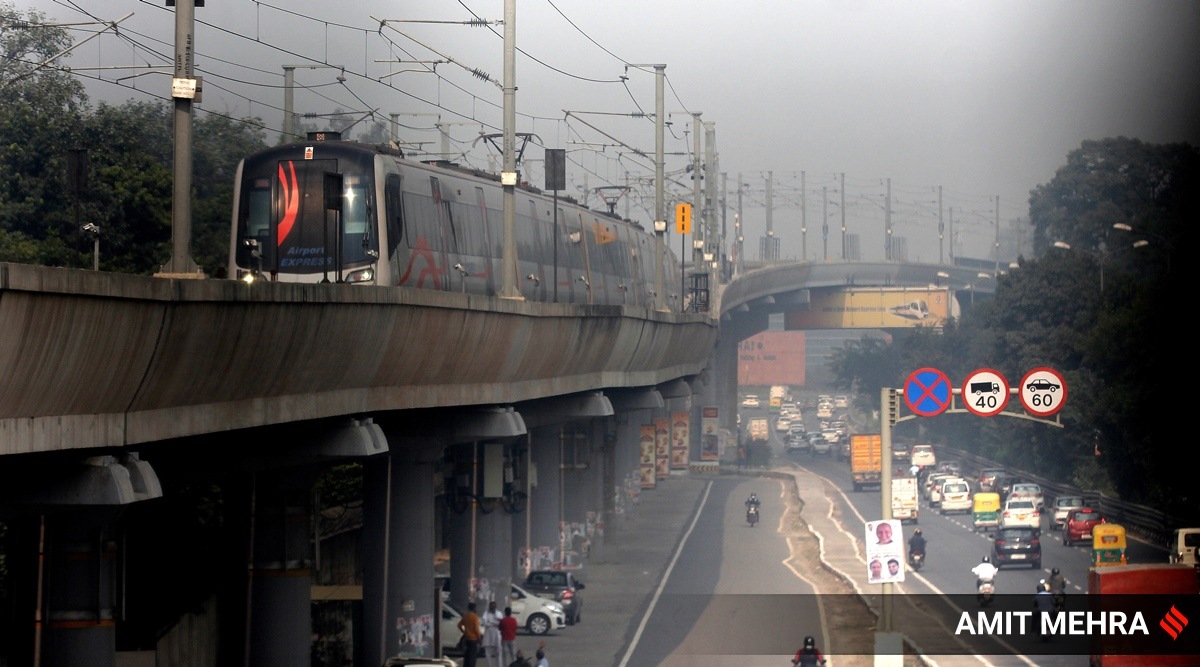 The carving of the erstwhile Municipal Corporation of Delhi (MCD) into three, in 2012 by the Congress party and then Chief Minister Sheila Dikshi, was done to “decentralise” the large local body. (Express Photo by Amit Mehra)
The carving of the erstwhile Municipal Corporation of Delhi (MCD) into three, in 2012 by the Congress party and then Chief Minister Sheila Dikshi, was done to “decentralise” the large local body. (Express Photo by Amit Mehra) To understand a push to unify Delhi’s three municipal corporations – South, North and East – one needs to look back to a time when the Aam Aadmi Party was yet to emerge as a major force.
The trifurcation
The carving of the erstwhile Municipal Corporation of Delhi (MCD) into three, in 2012 by the Congress party and then Chief Minister Sheila Dikshit, was done to “decentralise” the large local body.
However, it was also an attempt to fix political boundaries in such a way that the then Congress government in Delhi would be able to make inroads into the civic body, which had become a BJP bastion. The BJP continues to rule the three MCDs, but the AAP hopes to change that this time.
The trifurcation, which divided resources unequally, is at the heart of the financial crisis in the civic bodies. While the move was aimed at decentralising municipal governance in Delhi, officials said it only “tripled the number of officers, increased costs and resulted in unequal distribution of assets and liabilities”.
The North, being the owner of the biggest civic body, also became the most top-heavy. The North Corporation is struggling with a deficit of over Rs 1,300 crore and East of over Rs 1,000 crore.
What came next
After the trifurcation, the North Delhi Municipal Corporation and South DMC were given 104 wards each, while the East DMC had 64 in mostly the trans-Yamuna area.
Due to the demography of Delhi, the South body ended up with the most “posh” colonies – the A and B category taxation zones that paid higher property taxes. The North body, on the other hand, got more unauthorised and lower taxation category colonies, which pay less tax, or not at all. This led to a financial crisis for North and East.
The split created a structure in which the South ended up earning around 30% of its internal revenue through property tax. For the North corporation, the share of internal revenue through property tax was half that (around 15 per cent), while for the East body, this figure was even lower (around 9 per cent).
The East corporation has around 2,28,000 taxpayers among 4,00,000 property owners, the North MCD has 3,35,000 taxpayers among 1 million property owners, and the South body has 4,75,000 taxpayers among its 1.1 million property owners, according to data released by the three MCDs before the last civic body elections in 2017.
The financial hit
Safai karamcharis, medical staff, healthcare workers, engineers, doctors and nurses have gone off the streets since 2015 at least 50 times, in protest against salary delays, bonuses and cashless medical cards. Trouble escalated after the AAP came to power in the Assembly in 2015 and BJP returned to the MCDs. The BJP has constantly blamed AAP for not paying its dues, while AAP blames corruption in the MCDs for the financial crisis.
The (re)unification
The Delhi BJP has been in favour of unification of the three municipal corporations and has been advocating for a merger for the past few months with the central leadership, it is learnt.
Sources said state unit president Adesh Gupta and leader of opposition Ramvir Singh Bidhuri have been advocating with the Home Ministry the need to unify the three civic bodies ahead of MCD polls scheduled in April. This, as the Delhi BJP faces significant anti-incumbency and a buoyant AAP.
It also has political significance as the MCDs have constantly claimed they are devoid of funds because the AAP-led Delhi government has been blocking it. “This would also help the party send out a message to the public of how they plan to fix the fund crisis if voted to power again,” said a leader.
Also, the party wants to “run the corporation after a merger for some time in a better pay with salaries being given on time and taking new initiatives” – to send out a message that it was the trifurcation that had led to the crisis and a “historical wrong” has been corrected. This, the BJP hopes, will at least help it put up a fight against the AAP.
- The Indian Express website has been rated GREEN for its credibility and trustworthiness by Newsguard, a global service that rates news sources for their journalistic standards.

